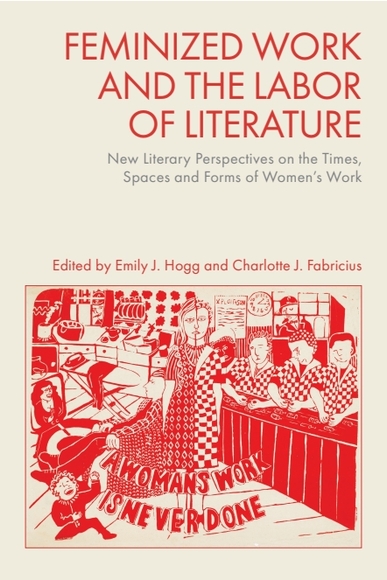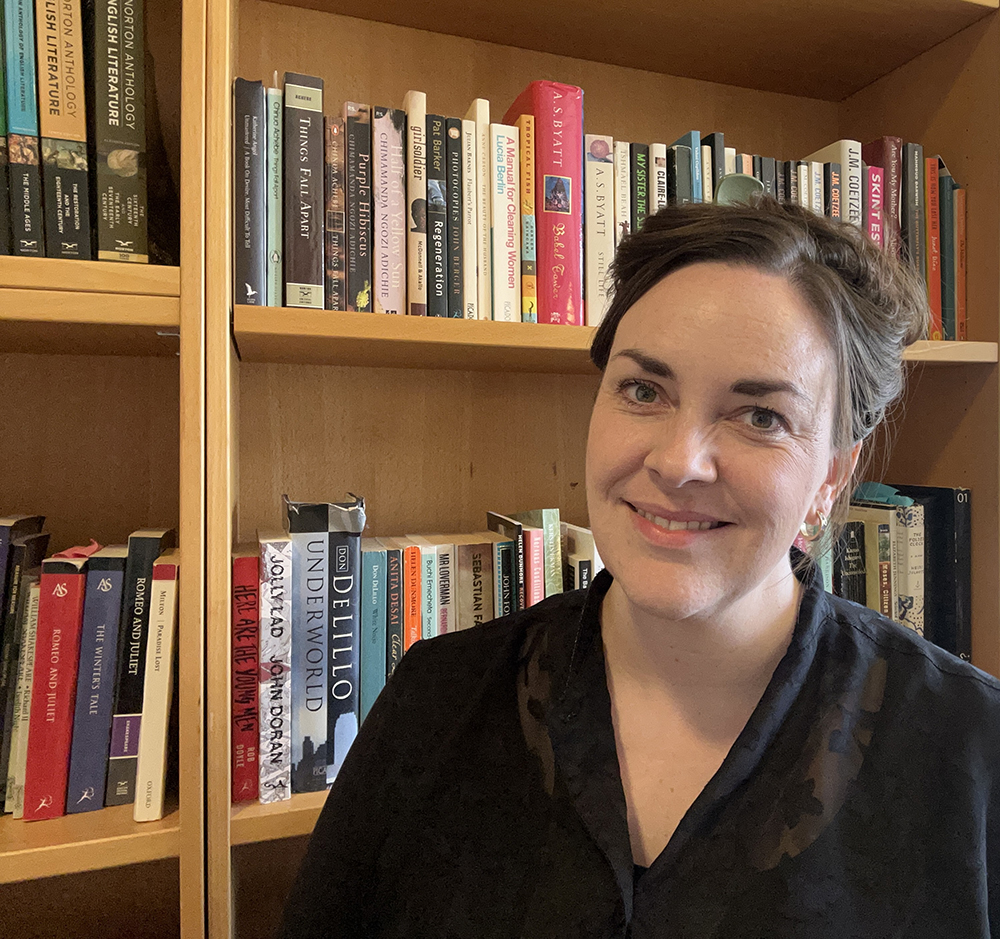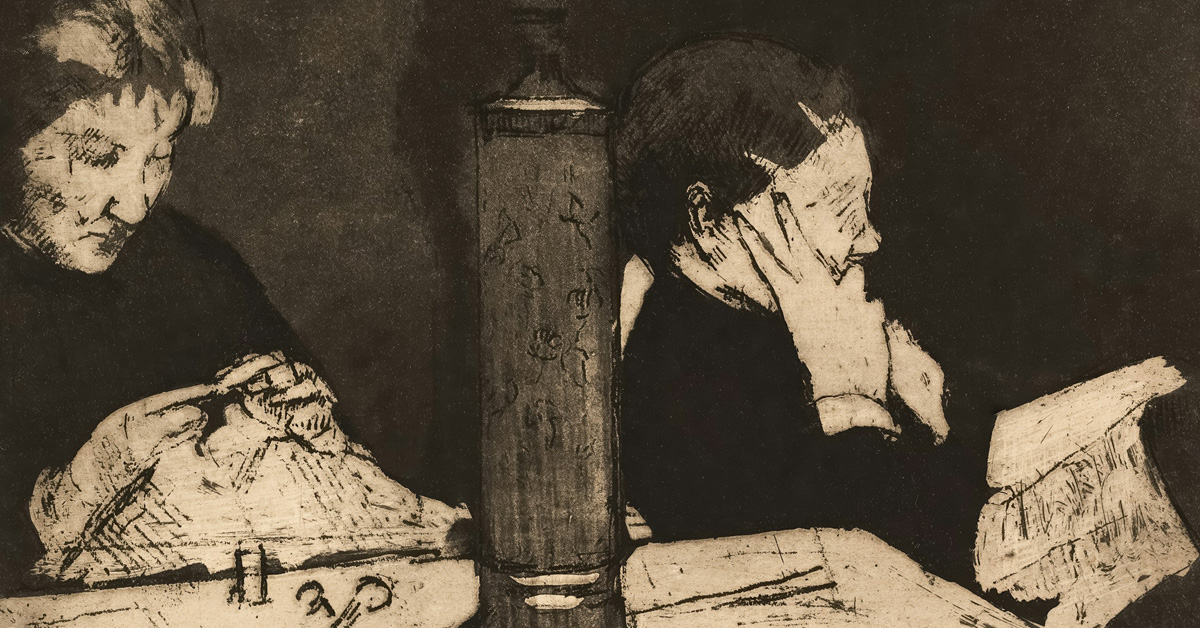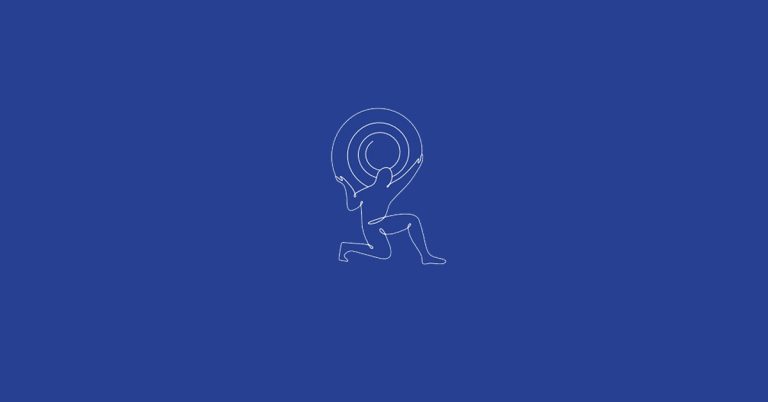
by Emily J. Hogg

Feminized Work and the Labor of Literature explores literary representations of ‘women’s work’ to generate new understandings of contemporary working conditions
Tell us a bit about your book
Feminized Work and the Labor of Literature is about the relationship between literature and the types of work people have historically described as feminine or ‘women’s work.’ In Chapter One, for example, Nicola Wilson writes about Aki Hayashi who was a research assistant to the poet Edmund Blunden, and did a lot of under-acknowledged scholarly work while employed by him. In Chapter 7, Lindsay Turner writes about domestic work and the poetry of Adrienne Rich. The book argues that by paying attention to the way women have thought about and represented forms of conventional women’s work, we gain new insight into major twenty-first century problems. That’s because many of the issues associated with ‘women’s work’ affect us today, despite many significant changes in women’s social position: why are tasks like caring and cleaning so often unpaid or underpaid, when we can’t live without them, for example?
What inspired you to research this area?
A very common media archetype when I was growing up was ‘the woman who wants to have it all’ – ‘all’ meaning a successful career, a happy marriage, and well-adjusted children. Talking to friends and family as an adult, I frequently realised how many of us struggle to balance the types of work required by our paid jobs and home life, and how often ideas about gender which seem as if they should be obsolete resurface when couples and families talk about who, actually, is responsible for taking the bins out or remembering a child’s afterschool class. I began this project with my co-editor Charlotte J. Fabricius because I wanted to examine these questions beyond the level of the individual – to explore earning a living, caring for others, and ensuring the reproduction of the next generation as social issues which are shaped by the economic system we live in, and which are therefore engaged with in literary texts from quite different times and spaces.
What was the most exciting thing about this project for you?
The most exciting aspect of the project was the way we developed the book. Charlotte and I knew we wanted it to be a process of genuine exchange and feminist intellectual community, and thanks to funding from the Carlsberg Foundation we were able to organise a workshop at which we invited people – some we knew but most we didn’t – for two days of discussion, sharing draft work, and meals together. It was a really wonderful way to work on a book collaboratively. We were so grateful to the contributors for throwing themselves into it: it can be very vulnerable to share work in progress, but because we were all sharing our drafts and workshopping them together, I think it created some interesting connections and points of dialogue across the volume.
Did you discover anything particularly surprising?
The contributors came up with ideas and approaches we would never have anticipated, and the range of chapters in the book is incredibly exciting. One of the great benefits of an edited volume is that it can be so diverse. We have chapters on women’s talk, on the afterlife of Virginia Woolf’s imagined Judith Shakespeare, and on the library of an early-modern Danish noblewoman. I’m also really thrilled with the range of writers discussed. Part 2 of the book focuses on writers working today: Cherie Jones, and radical new maternal writing by Rachel Yoder, Anne Whitehouse and Jessamine Chan. Across the book, we also move across time, discussing Virginia Woolf, Doris Lessing, George Eliot, Penelope Mortimer, and Buchi Emecheta. There’s also a chapter by Leah Misemer on the comic Resist!, which was distributed at the 2017 Women’s March in the immediate aftermath of Donald Trump’s first election victory. Today this chapter feels more relevant than ever.
Has your research in this area changed the way you see the world today?
Definitely. For example, a lot of housework (which has historically been seen as a female domain) can be repetitive and boring. Simone de Beauvoir famously described housework as akin to the torture of Sisyphus. Literature, by contrast, has historically had this immense cultural cachet. Thinking about literature alongside feminized work has been fascinating, not only because it has revealed the way that many women have historically negotiated such different forms of work at the same time, but also because it invites opens up profound questions about what we do with our time, and why. Christina Lupton writes about this very eloquently in the book’s afterword, asking how far the word ‘work’ can describe the forms of care and connection which might – in a more just and equal social order – be associated with both the maintenance of our shared world, and the exercise of the creative imagination.
About the editor

Emily J. Hogg is Associate Professor of Contemporary Anglophone Literature at the Department of Culture and Language, University of Southern Denmark. Her research focuses on contemporary literature’s social and political dimensions, especially in relation to precarity, feminization, and human rights discourse. This work has been published in Textual Practice, ASAP/J, Criticism, English Studies and elsewhere.






